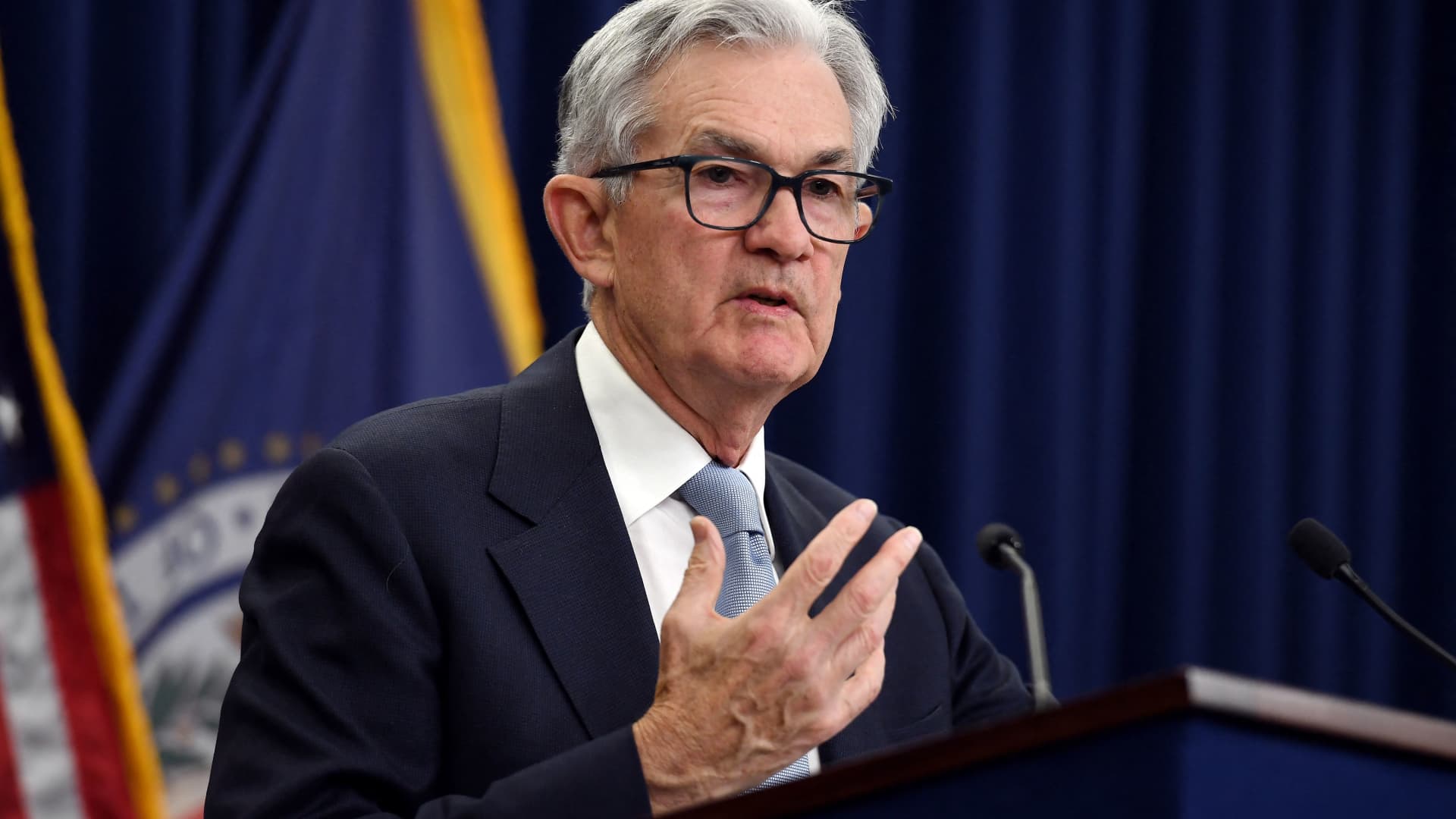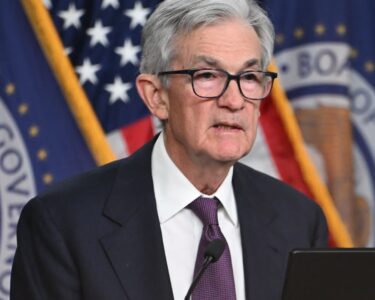There won’t be a lot of mystery surrounding what the Federal Reserve is going to do Wednesday with interest rates. Where the intrigue comes in is how the central bank proceeds from here.
Markets have priced in a near-100% probability that the rate-setting Federal Open Market Committee will approve a quarter percentage point rise at the conclusion of the two-day meeting. That will mark the 10th increase since March 2022, taking the Fed’s benchmark borrowing rate to a target range of 5%-5.25%.
For investors, the hard part will be what happens next: Does the Fed signal that it’s done hiking, or will it leave open the option of tightening even further if it judges that more needs to be done to fight inflation?
“What’s most important is how they convey the potential for a pause going forward,” said Collin Martin, fixed income strategist at Charles Schwab. “How do they do that while also probably leaving the door open a little bit? That will be a balancing act between suggesting a pause is in the cards but still is dependent on incoming data should inflation turn higher going forward.”
Multiple factors will come into play as Fed Chairman Jerome Powell and his colleagues point to where monetary policy is heading.
Inflation has been at the forefront of official thinking. Recent indicators point to a softening but only to a level that is still well above the Fed’s 2% target.
For instance, the Dallas Fed compiles a gauge called the “trimmed mean” for personal consumption expenditures that essentially throws out high and low readings. That is showing annual inflation around 4.7% in March, little changed since August 2022 and up from a 3.9% pace in March 2022. The consumer price index was at 5% in March, compared with 8.5% a year ago.
None of those figures are satisfactory for Fed officials.
Regardless of the measure, inflation “is still much too high and so my job is not done,” Fed Governor Christopher Waller said in an April 14 speech. “I interpret these data as indicating that we haven’t made much progress on our inflation goal, which leaves me at about the same place on the economic outlook that I was at the last FOMC meeting, and on the same path for monetary policy.”
But the Fed has another consideration that has taken much of the market’s attention, namely the nettlesome problems in the financial world that claimed another bank earlier this week when JPMorgan Chase absorbed First Republic, which had been the nation’s 14th-largest bank by assets.
Then there’s the economy. A looming recession appears to be getting closer, with gross domestic product growing at just a 1.1% annualized pace in the first quarter and signs of cracks appearing in the labor market.
All those crosscurrents will lead the Fed to signal a policy pivot this week, according to Goldman Sachs. The firm’s economists expect the FOMC to tweak language in the post-meeting statement indicating a change ahead.
“The focus will be on revisions to the forward guidance in its statement,” Goldman economist David Mericle said in a client note. “We expect the Committee to signal that it anticipates pausing in June but retains a hawkish bias, stopping earlier than it initially envisioned because bank stress is likely to cause a tightening of credit.”
A “hawkish bias” means that Fed policymakers will stress that interest rates need to remain restrictive even though there may not be any additional increases on the way. The aim would be to maintain the central bank’s inflation-fighting credentials while also acknowledging the other stresses and the ability now to simply let the previous hikes run their course through the economy.
In the portion of the statement where the Fed provides guidance, Mericle expects to see a sentence that could look something like, “The Committee anticipates that the stance of monetary policy will most likely be sufficiently restrictive to return inflation to 2 percent over time but will closely monitor incoming information and assess the implications for monetary policy.”
To be sure, while the market is anticipating a “dovish” Fed, inclined to halt rate rises and start cutting later this year, stubbornly high prices could change that.
Inflation has proven to be more persistent than officials anticipated, borne out through the Atlanta Fed’s “sticky price” CPI that compares prices for goods and services that don’t change a lot over time against those that do.
Sticky prices increased 6.6% annually in March and have been generally on the rise, while “flexible price CPI” climbed just 1.6% and has declined precipitously since peaking at 19.7% in March 2022. Sticky prices include housing.
Those kinds of numbers at the very least will keep the Fed on high alert against letting its guard down too soon.
“Most Fed officials don’t seem comfortable that the rate hike cycle is over,” Citigroup economist Andrew Hollenhorst said in a note. The next Fed policy meeting comes in six weeks, on June 13-14, and April’s consumer price report is due in one week, on May 10.
“The center of the committee acknowledges the unknown macroeconomic effect of credit tightening, keeping the potential need for further rate hikes on the table,” Hollenhorst added. “And recent data have not been comforting regarding bringing inflation under control.”
In fact, Citi sees not only an increase at this week’s meeting but also additional hikes in June and July before the Fed finally pulls back.
“The statement and Chair Powell’s press conference should mainly be about reasserting that the policy path [will] be data dependent, rather than guiding to any preordained policy path,” Hollenhorst wrote.
Along with the delicate balance of how to telegraph the rate hike, could come some variety in opinion among Fed officials who generally move in unison. Remarks since the beginning of March have reflected divergent views between those who are expecting a policy change against those who still see inflation as the top priority.
“Is this going to be the one-and-done Fed meeting?” said Quincy Krosby, chief global strategist at LPL Financial. “There’s dissension within the Fed. It’s public. You can only imagine what the internal debate is like. … This Fed meeting is crucial.”






